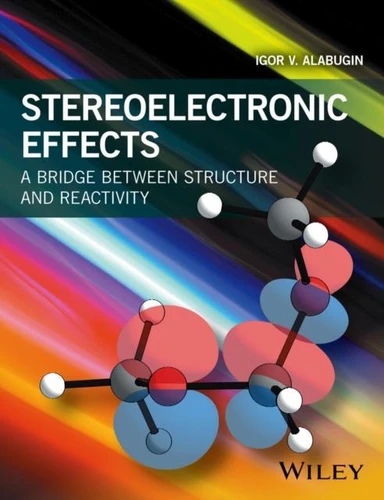The molecular world is defined by interactions between electronic orbitals described at increased levels of theoretical sophistication. This book translates these theoretical ideas into the language of practicing organic chemists by illustrating how stabilizing electronic orbital interactions can be maximized by favorable orbital overlap at a particular geometry. This dependence gives rise to the concept of stereoelectronic effects, the ubiquitous forces that define interactions between different molecules and between different parts of a single molecule.
The consequences for practical control of organic reactions and design of organic materials are well-recognized - stereoelectronic effects manifest themselves in molecular shape, stability, reactivity, and selectivity. Their application in the molecular sciences encompasses organic synthesis, enzyme catalysis, drug design, materials science, chemical biology, and spectroscopy. This book offers concise practical guidelines for the control of chemical structure and reactivity.
It provides an up-to-date critical analysis of stereoelectronic effects, including theoretical and experimental approaches to their detection and quantification. It showcases the variety of organic reactivity patterns and explains individual idiosyncrasies and chameleonic behavior of functional groups.
The molecular world is defined by interactions between electronic orbitals described at increased levels of theoretical sophistication. This book translates these theoretical ideas into the language of practicing organic chemists by illustrating how stabilizing electronic orbital interactions can be maximized by favorable orbital overlap at a particular geometry. This dependence gives rise to the concept of stereoelectronic effects, the ubiquitous forces that define interactions between different molecules and between different parts of a single molecule.
The consequences for practical control of organic reactions and design of organic materials are well-recognized - stereoelectronic effects manifest themselves in molecular shape, stability, reactivity, and selectivity. Their application in the molecular sciences encompasses organic synthesis, enzyme catalysis, drug design, materials science, chemical biology, and spectroscopy. This book offers concise practical guidelines for the control of chemical structure and reactivity.
It provides an up-to-date critical analysis of stereoelectronic effects, including theoretical and experimental approaches to their detection and quantification. It showcases the variety of organic reactivity patterns and explains individual idiosyncrasies and chameleonic behavior of functional groups.


